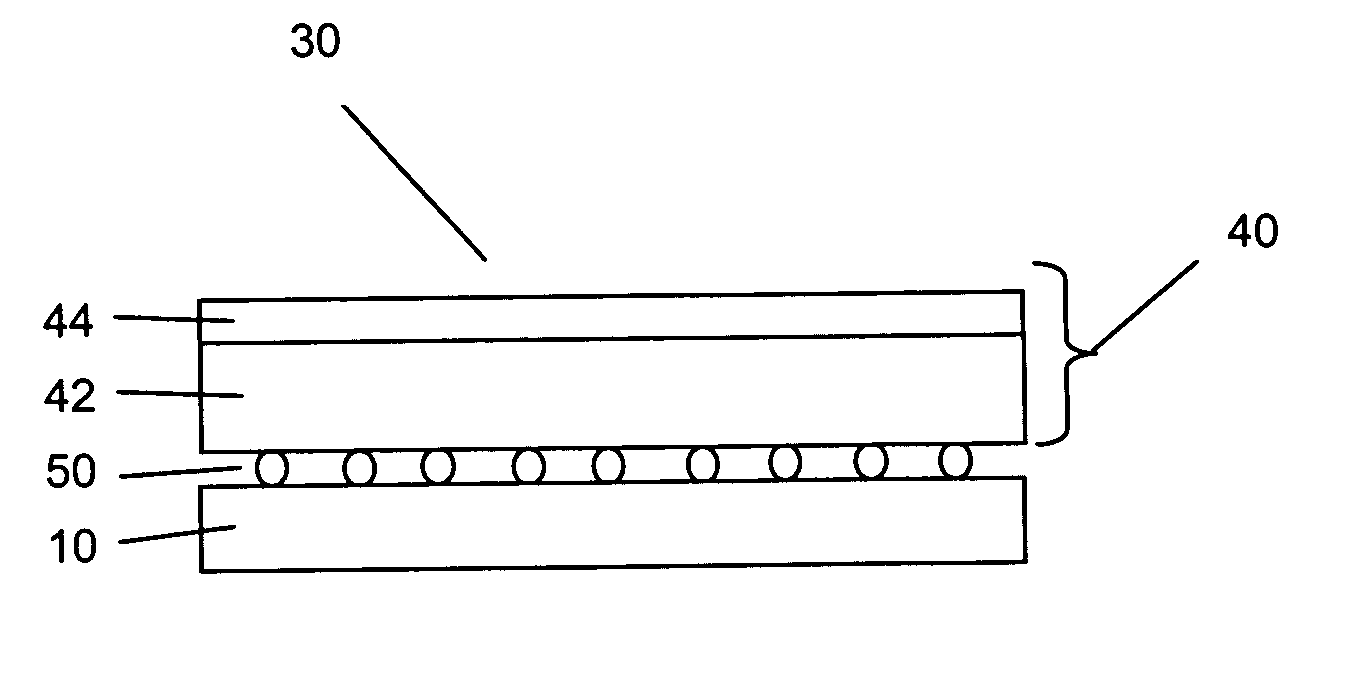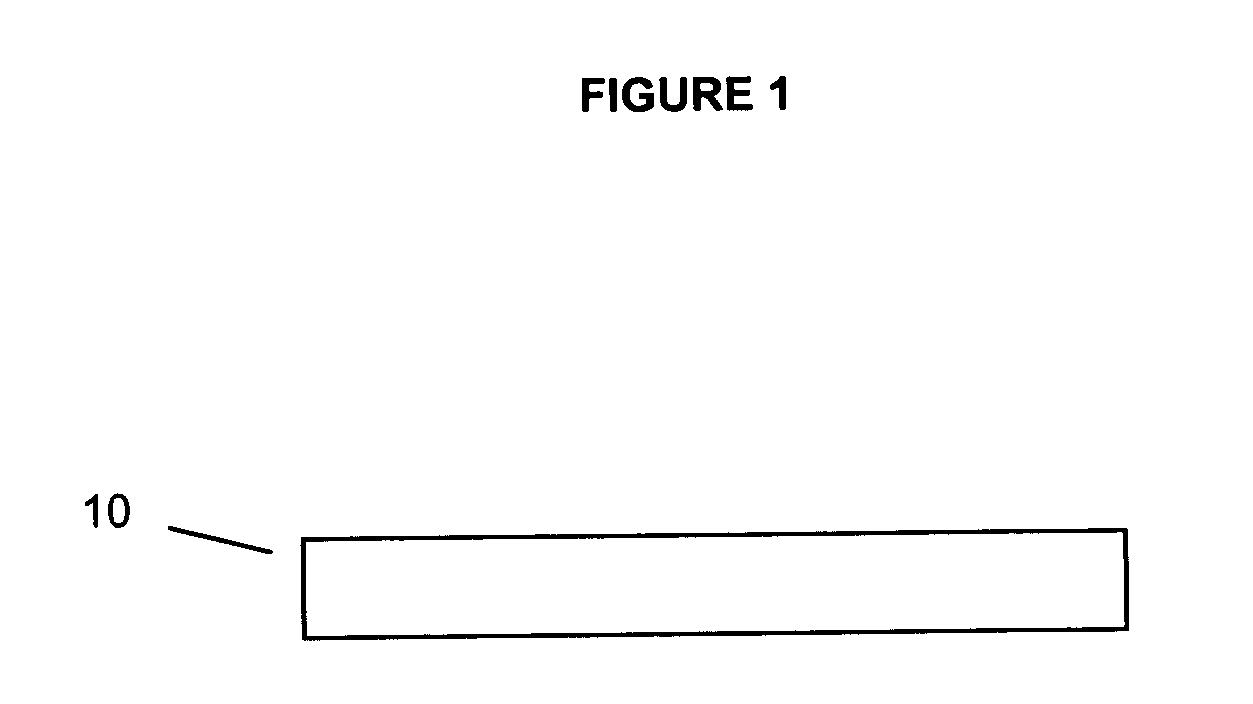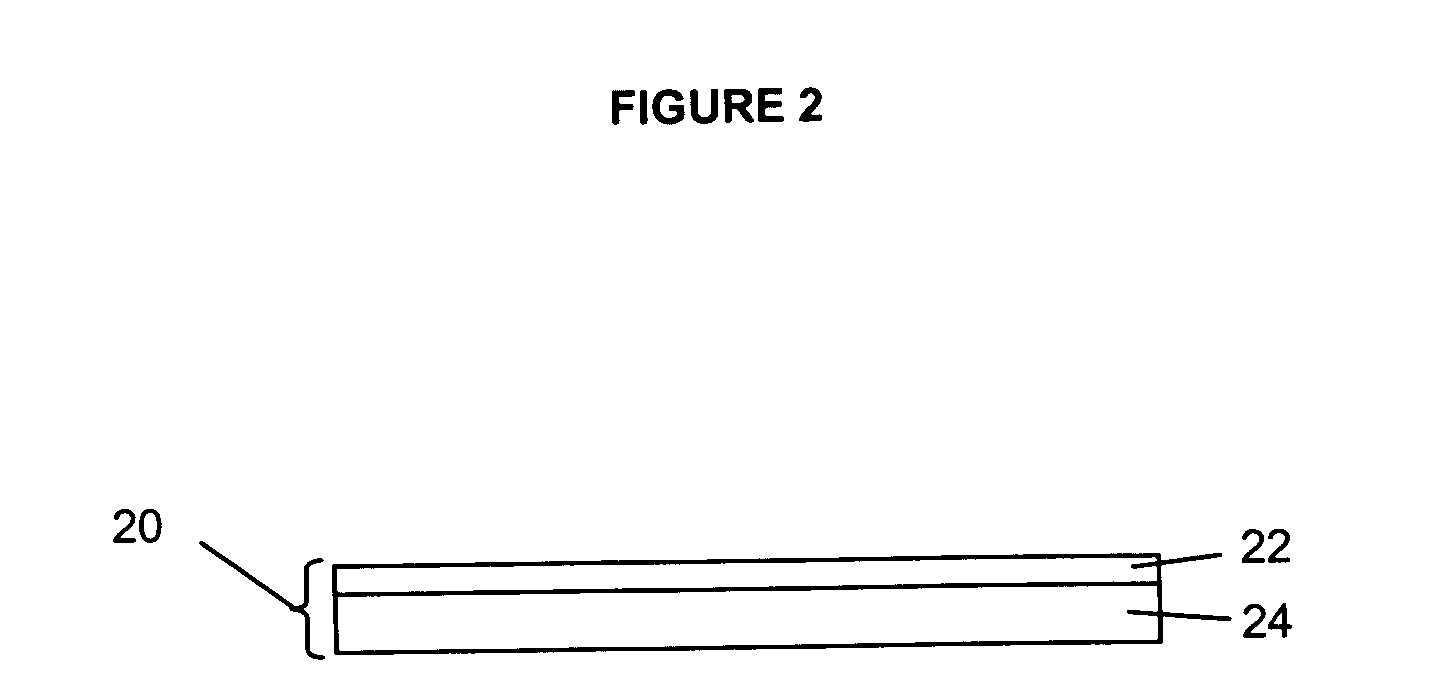Infrared suppressive material
- Summary
- Abstract
- Description
- Claims
- Application Information
AI Technical Summary
Benefits of technology
Problems solved by technology
Method used
Image
Examples
example 1
[0054] Monolithic nIR suppressive layer samples were prepared from polyurethane and additives. Specifically, polyurethane samples were prepared as taught in U.S. Pat. No. 4,532,316. The pre-polymer described was heated at 150° C. to fluid form, and 10% titanium dioxide powder (DuPont Chemicals, Wilmington, Del.) was dispersed in the polymer by hand mixing to form a homogeneous mixture. The cool, TiO2-filled pre-polymer was then heated at 150° C. for one hour and divided into five portions. Carbon black (Vulcan XC72, Cabot Corporation, Boston, Mass.), in five different concentrations of 0.01%, 0.05%, 0.1%, 0.5% and 1.0% by weight was added to each portion of the pre-polymer and hand mixed until it appeared homogenous. Films were formed from each of these fluids, whereby the heated polyurethane pre-polymer portions were cast at 4 mil thickness using a manual drawn down technique and draw down bars. These films were moisture cured for 48 hours at ambient temperature.
[0055] Average ref...
example 2
[0056] A construction of each of the five near infrared suppressive layer samples formed in Example 1 and a Day Desert Camouflage Nylon textile (Style #131971, Milliken & Company, Spartanburg, S.C.), was made by stacking each film with the textile material in an unbound layered construction and clamping in an embroidery hoop. The light tan portion of the camouflage textile pattern was used for reflectance measurements on all constructions that include a textile, unless otherwise specified. The average reflectance of each of the five constructions of this example was measured in the 400-700 nm and the 720-1100 nm wavelength ranges. Results are reported in Table 2 as Examples 2a-2e.
example 3
[0061] A microporous ePTFE membrane measuring 0.001 inch thick (0.2 μm nominal pore size, mass of 20 g / m2, obtained from W. L. Gore & Associates, Inc.) was coated with carbon black (Vulcan XC72, Cabot Corporation, Boston, Mass.) using a fluorocarbon polymer binder and wetting agents. The binder system was formulated by mixing 2.6 g of Witcolate ES2 (30% solution) (obtained from Witco Chemicals / Crompton Corporation, Middlebury, Conn.), 1.2 g of 1-Hexanol (Sigma-Aldrich Chemical Corporation, St. Louis, Mo.), and 3.0 g of fluoropolymer (AG8025, Asahi Glass, Japan) in 13.2 g of deionized water. 0.015 g of Carbon black was added to the binder system. The mixture was sonicated for 1 minute. The membrane was hand coated with the mixture using a roller to a coating weight of approximately 3 g / M2. The coated membrane was cured at 185° C. for 2.5 minutes. The moisture vapor transmission rate of the coated membrane was measured to be 45,942 g / m2 (24 hours).
PUM
 Login to View More
Login to View More Abstract
Description
Claims
Application Information
 Login to View More
Login to View More - R&D
- Intellectual Property
- Life Sciences
- Materials
- Tech Scout
- Unparalleled Data Quality
- Higher Quality Content
- 60% Fewer Hallucinations
Browse by: Latest US Patents, China's latest patents, Technical Efficacy Thesaurus, Application Domain, Technology Topic, Popular Technical Reports.
© 2025 PatSnap. All rights reserved.Legal|Privacy policy|Modern Slavery Act Transparency Statement|Sitemap|About US| Contact US: help@patsnap.com



